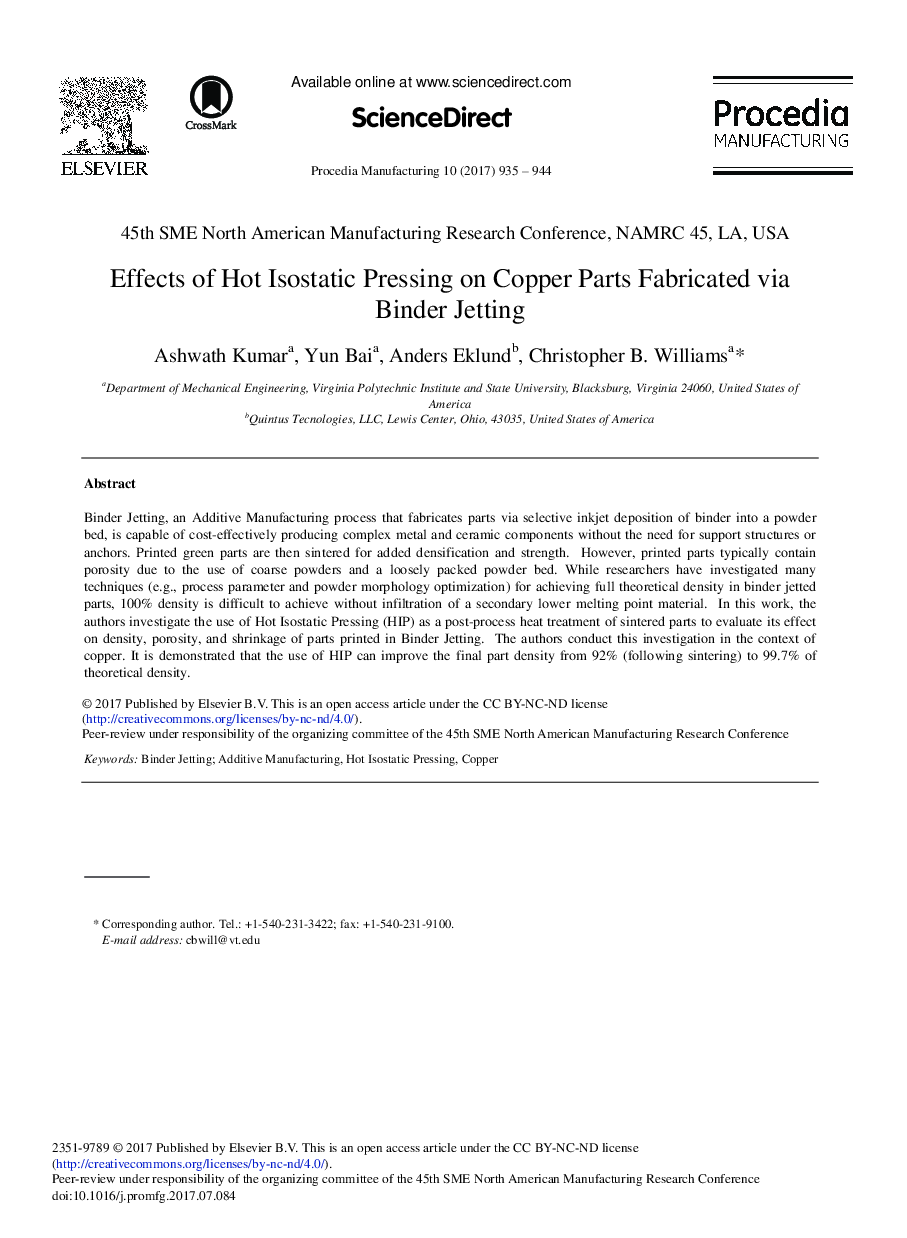| Article ID | Journal | Published Year | Pages | File Type |
|---|---|---|---|---|
| 5128836 | Procedia Manufacturing | 2017 | 10 Pages |
Binder Jetting, an Additive Manufacturing process that fabricates parts via selective inkjet deposition of binder into a powder bed, is capable of cost-effectively producing complex metal and ceramic components without the need for support structures or anchors. Printed green parts are then sintered for added densification and strength. However, printed parts typically contain porosity due to the use of coarse powders and a loosely packed powder bed. While researchers have investigated many techniques (e.g., process parameter and powder morphology optimization) for achieving full theoretical density in binder jetted parts, 100% density is difficult to achieve without infiltration of a secondary lower melting point material. In this work, the authors investigate the use of Hot Isostatic Pressing (HIP) as a post-process heat treatment of sintered parts to evaluate its effect on density, porosity, and shrinkage of parts printed in Binder Jetting. The authors conduct this investigation in the context of copper. It is demonstrated that the use of HIP can improve the final part density from 92% (following sintering) to 99.7% of theoretical density.
